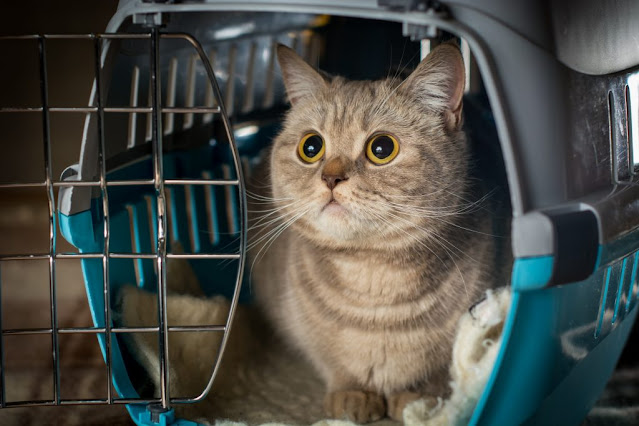Bringing your beloved feline companion to the vet is an essential part of responsible pet ownership. Regular check-ups and necessary treatments ensure their health and well-being. However, it's not uncommon for cats to exhibit signs of distrust or fear following a vet visit. These changes in behavior can be puzzling and disheartening for cat owners, who may feel rejected or confused. In this blog post, we will explore why some cats lose trust after a vet visit, how their behavior may change, and provide practical tips to help rebuild the bond and regain their trust.
1. The Vet Visit Experience:
Understanding the vet visit experience from your cat's perspective is crucial in comprehending their reactions afterward. For cats, vet visits can be overwhelming and stressful due to unfamiliar environments, strange smells, and various procedures. They may associate these experiences with discomfort, pain, or fear, leading to a breakdown of trust between you and your feline friend.
2. Signs of Distrust:
After a vet visit, you may notice changes in your cat's behavior that indicate a loss of trust. Some common signs include hiding, avoiding contact, hissing, growling, excessive grooming, loss of appetite, or even aggressive behavior. It's important to remember that these reactions are not personal but rather a defense mechanism triggered by the stress of the vet visit.
3. Patience and Understanding:
Rebuilding trust takes time, patience, and understanding. Recognize that your cat's behavior is a reaction to a stressful event and not a reflection of their overall personality. Avoid forcing interactions or punishing them for their reactions, as it will only exacerbate the issue. Instead, provide a calm and reassuring environment that allows your cat to regain their sense of security at their own pace.
4. Creating a Safe Space:
Designating a safe space for your cat can significantly help in rebuilding trust. Set up a quiet area where your feline friend can retreat to whenever they feel overwhelmed or anxious. Fill this space with familiar objects, such as their bed, toys, and blankets, to create a sense of familiarity and comfort. Make sure to respect their boundaries and avoid intruding on their safe space unless necessary.
5. Gradual Reintroduction of Positive Experiences:
Regaining trust involves reintroducing positive experiences that associate you with pleasant moments in your cat's life. Start by engaging in activities your cat enjoys, such as gentle play sessions or offering their favorite treats. Use positive reinforcement techniques to reward their desired behaviors and gradually rebuild the bond between you and your furry friend.
6. Enrichment and Distraction:
Enriching your cat's environment with interactive toys, scratching posts, and puzzles can divert their attention from the negative associations they may have developed with you or the vet visit. These distractions help shift their focus onto enjoyable activities, allowing them to rebuild trust at their own pace.
7. Seek Professional Help if Needed:
If your cat's distrust persists or escalates despite your best efforts, seeking professional help from a veterinarian or animal behaviorist is recommended. They can provide specific guidance tailored to your cat's needs and help address any underlying issues contributing to their behavior.
It can be disheartening when your cat doesn't trust you after a vet visit, but with patience, understanding, and consistent effort, you can rebuild the bond and regain their trust. Remember to provide a safe and calm environment, reintroduce positive experiences gradually, and seek professional help if needed. Ultimately, your dedication and love will help your cat overcome their fears and rebuild the special connection you share.


Comments
Post a Comment